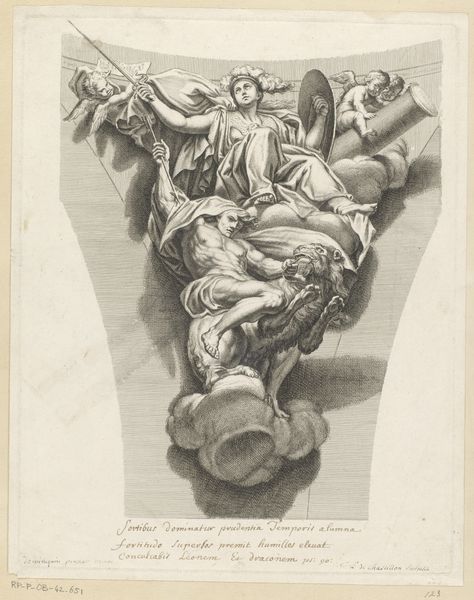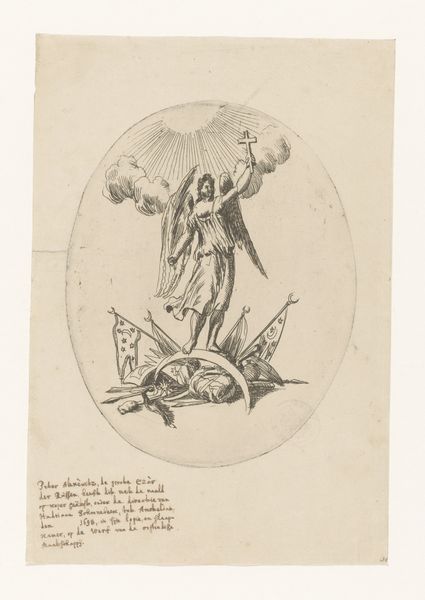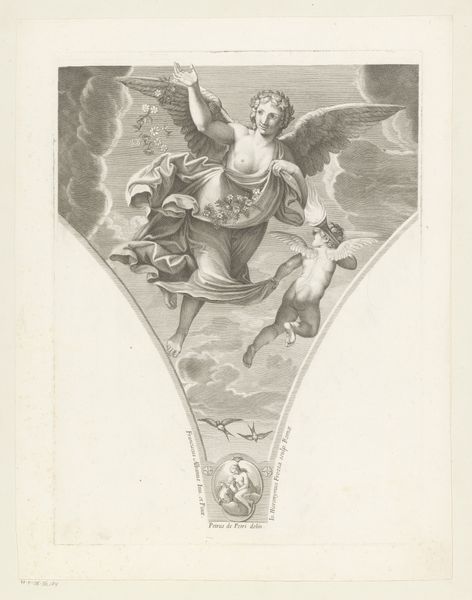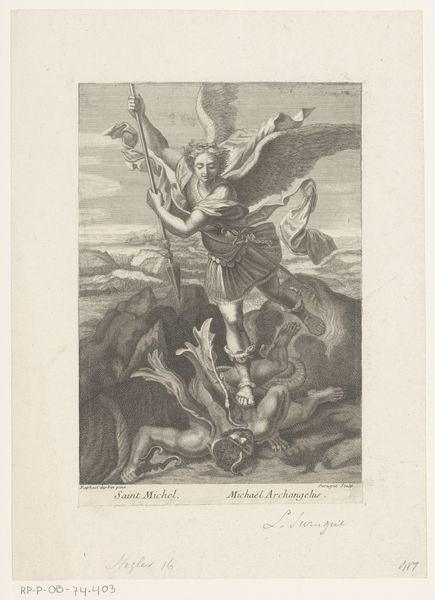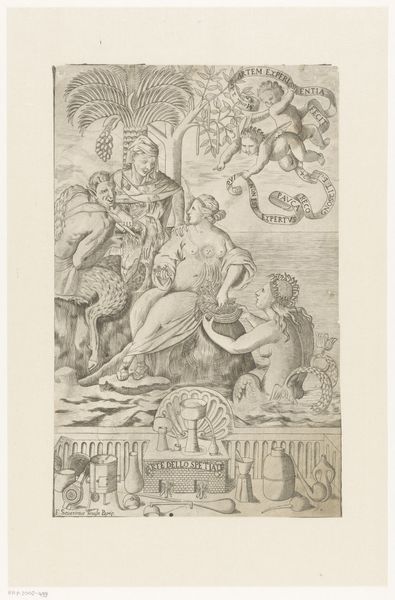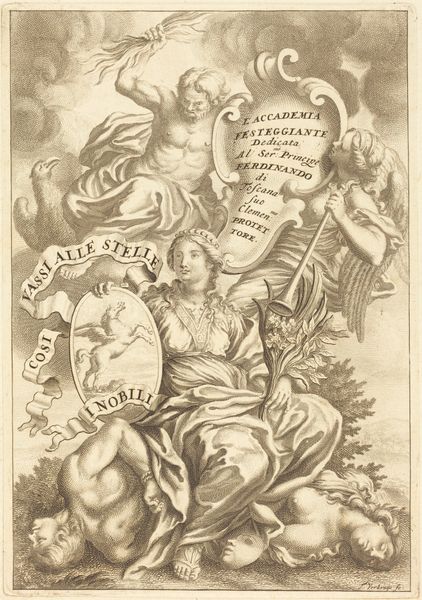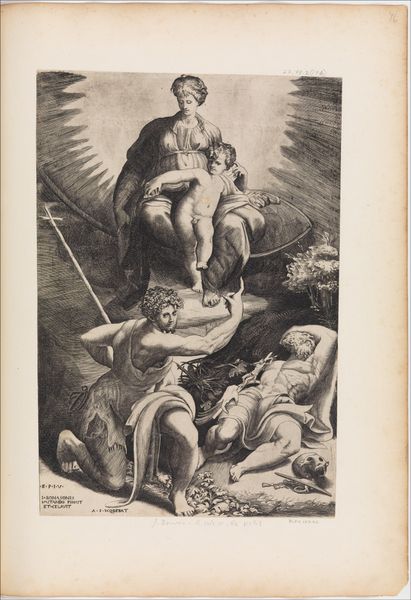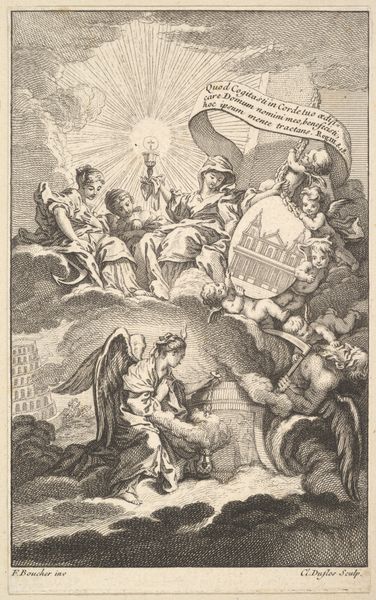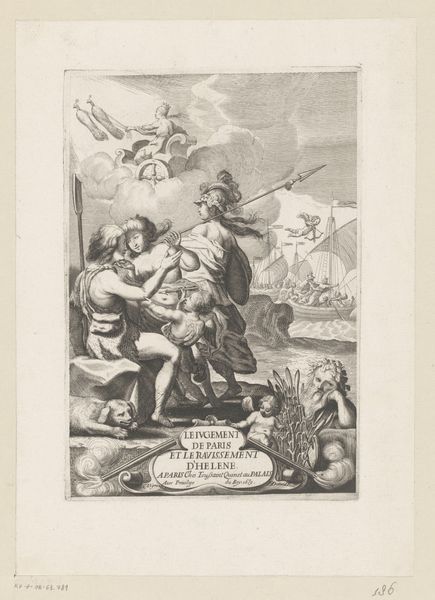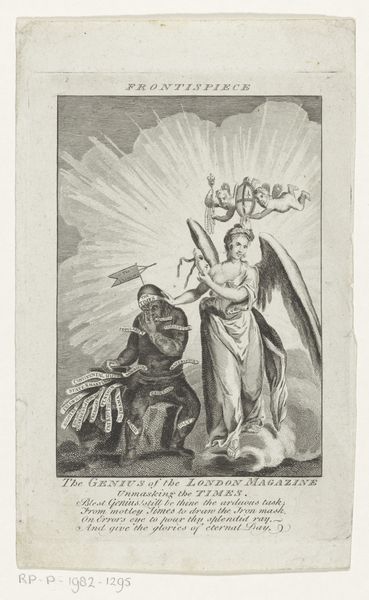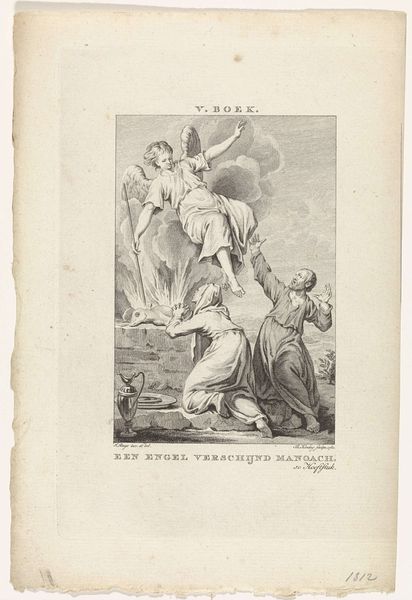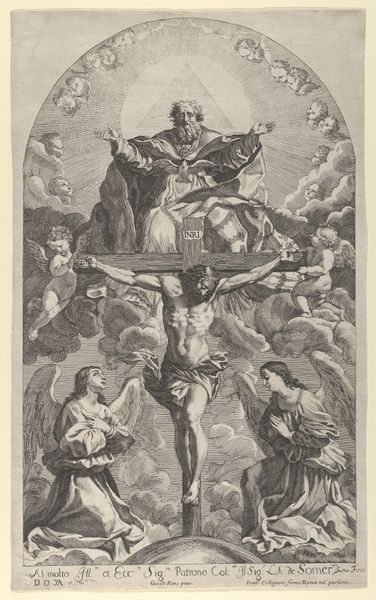
print, engraving
#
allegory
#
baroque
# print
#
history-painting
#
engraving
Dimensions: height 259 mm, width 190 mm
Copyright: Rijks Museum: Open Domain
Curator: This print, made by Wenceslaus Hollar in 1639, is entitled "Fame Overcoming Time and Death." You can find it in the Rijksmuseum collection. Editor: A dramatic piece! It’s arresting how the relatively limited tonal range contributes to an overall impression of tension, doesn't it? Like a staged theatrical moment captured in ink. Curator: Indeed. Hollar's cross-hatching technique masterfully constructs form, establishing contrast between the idealized, flowing figure of Fame and the decrepit representation of Death below. It underscores a symbolic visual dynamic. Editor: Absolutely. Look at the hourglass that old man is holding. It indicates the limits of earthly existence. Hollar uses classical personifications – the figure of Death with his scythe. He has rendered Father Time nearly vanquished at the bottom; clearly drawing from centuries-old artistic vocabularies for the triumph of renown over mortality. Curator: It is worth examining the composition in terms of Baroque ideals. There's a palpable sense of upward movement achieved through diagonal lines and contrasting textures. Note the sharp precision defining details on elements higher in the picture plane as compared to figures below, rendered using visibly more frenetic mark-making. Editor: Note too the hanging portrait in the upper left. Its precise identity remains less certain. Given its inclusion so prominently, the viewer is strongly encouraged to consider this individual's fate alongside these greater allegorical constructs being conveyed by the larger grouping itself. The symbols do make us reflect on power, legacy, and perhaps the transience of both. Curator: What particularly resonates is Hollar’s command in reducing grand, complex, narrative to clearly definable graphical planes. Note for example how efficiently tone alone indicates recession for what are undoubtedly vast cloud-like atmospheric structures implied subtly but undoubtedly by just shades differentiating foreground figures from far horizons. Editor: Seeing those powerful symbolic juxtapositions – winged figure, vanquished Time, imminent scythe - underscores human aspirations for historical meaning, fame, and even the impossible dream that achievements defy oblivion. Curator: Quite. Ultimately Hollar asks us not only to consider lasting legacy – but by carefully employing stylistic and design devices prevalent for its contemporary viewers asks us question just *how* these constructs even formulate themselves during our lifespans. Editor: A print brimming over not only artistry, but deeply challenging contextual reflection on civilization building! I hadn’t considered half of that before now!
Comments
No comments
Be the first to comment and join the conversation on the ultimate creative platform.
